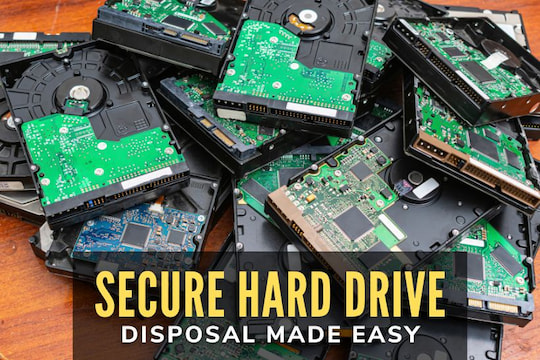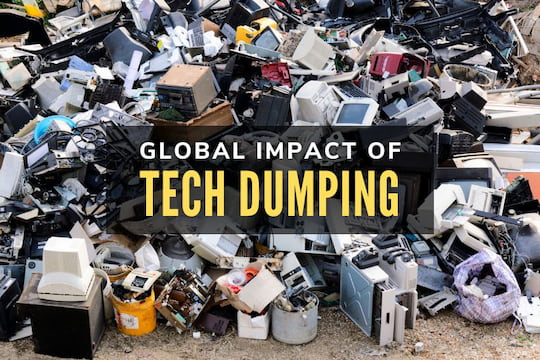The world generates about 50 million tons of electronic waste (e-waste) annually. Part of why e-waste keeps growing is people keep buying new smartphones every few years. One of the biggest problems with this trend is that many electronic devices contain toxic substances harmful to humans and the environment. Here's a look at current e-waste problems and solutions for sustainability.
Big Picture of e-Waste

Studying e-waste problems and solutions isn't discussed much in media, so there needs to be a deeper awareness. About 28 percent of e-waste comprises large appliances such as refrigerators and washing machines. The rest comprises a wide range of electronics from computers to TVs and lamps.
Some toxic substances used in electronic devices include mercury, lead, cadmium, and arsenic. In recent decades many states have passed strict legislation on how e-waste can be properly disposed of. You can no longer just throw a smartphone in the trash when you're done with it, as you must take it to a place that recycles or partners with a recycling facility.
According to the United Nations, E-waste is now the planet's most rapidly growing source of waste. Even with the banning of tossing electronics into dumpsters, landfills are still piling higher with e-waste. At these dumps, the toxic substances can seep back into the ground and contaminate the water and soil.
Rethinking Disposable Culture

Business leaders must rethink how they use technology and how it contributes to e-waste. Buying new equipment every few years keeps profits flowing for tech manufacturers, but it worsens the e-waste problem. For this reason, businesses should focus on repairing rather than replacing equipment when it breaks down.
There's a fine line between getting the most out of tech gadgets and protecting the equipment against hackers. The older computing equipment gets, the more vulnerable it is to getting compromised by cybercriminals.
The United States federal government created a task force under the Obama Administration, which released a 2011 report called "National Strategy for Electronics Stewardship." It outlined the government's plan to address e-waste with the following enhancements:
1. Promote green design incentives
2. Lead by example
3. Increase recycling within the United States
4. Reduce harmful exports of e-waste in developing countries
Challenges for Owners of Electronic Devices

A top solution for reducing e-waste is reusing or recycling old electronics. Old smartphones and computers can be given to charity or sold in a garage sale. There are plenty of people who seek cheap used electronic equipment. Make sure you pay attention to the top data protection and privacy challenges, such as wiping the data from a hard drive before getting rid of a computer.
Business owners who invest in computers can cut back by allowing a bring-your-own-device (BYOD) policy. Professionals are often more comfortable working on their personal devices, creating more workplace flexibility. Multiple devices connect with a network, as in a cloud-based remote work scenario, creating greater cybersecurity challenges.
Business technology decision-makers should consider buying environmentally-friendly electronics labeled Energy Star or certified by the Electronic Product Environmental Assessment Tool (EPEAT). Ultimately, Americans need to educate themselves about environmental safety better.
Conclusion
Businesses must not ignore e-waste problems and solutions. It's important for everyone to be conscious of e-waste proliferation and to make sure old electronic items are disposed of properly. To learn more about reducing e-waste buildup, contact the experts at West Coast Computer Recycler today!




















